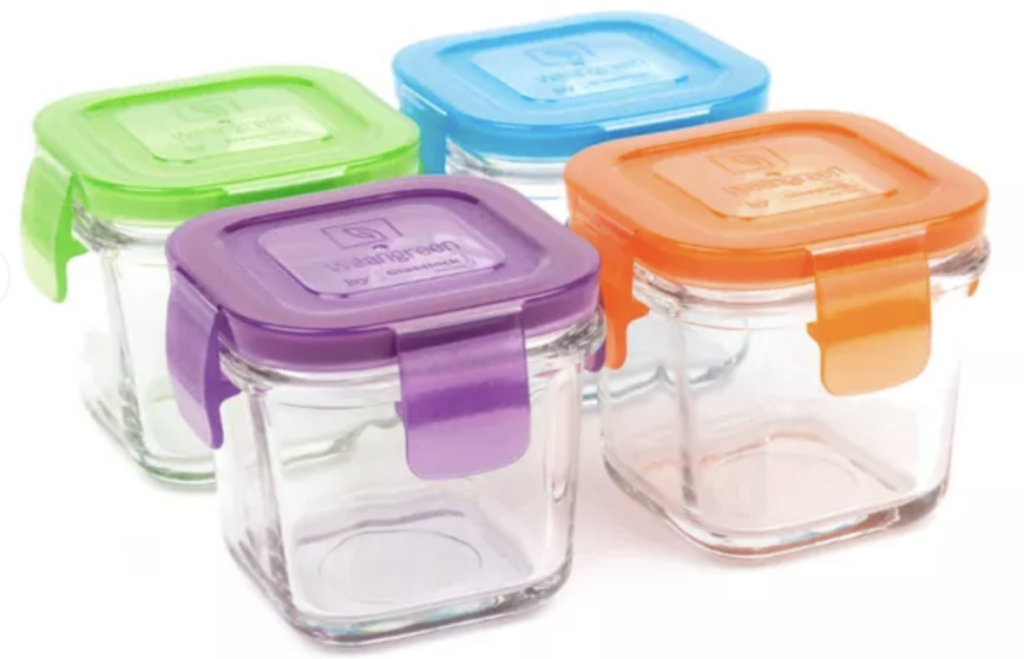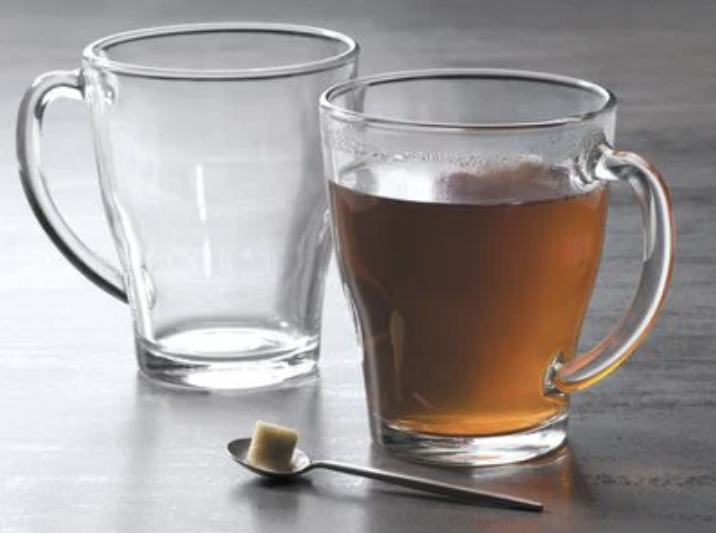I have been pretty religious about avoiding plastic and other cookware and foodware that could have hazardous chemicals in it. Chemicals of concern include BPA, BPS, and other plastic-related toxins, as well as PFAs that can be found in non-stick cookware, heavy metals like lead, cadmium, and aluminum. But I haven’t been perfect.
Plastics and Pumping
We all know about the hazards of plastic. Basically, try not to use single-use plastic nor use plastic regularly. And don’t put it in the microwave! Plastic breaks down and can leach toxins into our food and our drinking water.
Pumping became a tricky thing for me, because most breast pumps use plastic containers to collect the breastmilk. When I was in the throes of trying to breastfeed successfully and manage engorged breasts, I had a lactation consultant come visit and help me navigate the challenges. The instructions in a new hospital grade pump that my OB clinic recommended I buy suggested sterilizing the bottles before using them. The lactation consultant asked if it was okay to put them in the plastic bag that the bottles came with and microwave them, to sterilize the bottles. In my haziness and fatigue, I said yes – I was too overwhelmed to overthink. I still don’t feel good about having done that, but I moved on.
We also started out by sterilizing the plastic milk bottles regularly by boiling them, which was also recommended in the product instructions. This also makes me uncomfortable to recall. We didn’t continue this for too long, as we soon learned about the general guidelines of generally not needing to sterilize bottles, unless your baby was identified as being more susceptible to infection. At the time, it was a tension between not wanting to get her sick and not wanting her to drink chemicals from plastic. But I still have major mom guilt.
Here is what I would have done differently:
- Not use plastic bottles for pumping: I found out further down the road that there were glass bottles that fit my pump. Although they were heavier, I would have used those instead. In my case, Lifefactory baby bottles actually fit my Medela hospital-grade pump.
- Rinse the plastic bottles after boiling them: Apparently you can rinse off any chemicals that may have leached out of the bottles as a result of being heated. I didn’t learn this until later.
So I’d like to pass on this knowledge to other mamas who may be able to do things differently. Unfortunately, this doesn’t change the fact that plastic chemicals/contaminants are regularly found in our food and drinking water.
Food Storage and Cookware
I choose glass whenever I can. Here are a few brands that I’ve really liked:
Food storage

- Wean Green: These glass containers, made of tempered glass to withstand cold and heat, come in all shapes and sizes and are high quality and durable. We use them for food storage and for packaging our daughter’s snacks and lunch for school. (Note that you can use them in the oven, but only up to 250 degrees without the lid, which is made of polypropylyne, #5, plastic with a food grade silicone seal.) They claim that their products contain no harmful chemicals – no BPA, PVC, Lead, Phthalates. And they are made in South Korea, not China.
Cooking

- Simax glass pot: This pot is made of borosilicate glass, so it can withstand hight heat, and it also does not contain lead or cadmium. I’ve found it quite difficult to find glass cookware that is not made in China. Simax pots are made in the Czech Republic. The only challenge is that the glass breaks easily – we’ve been through quite a few.
- Note that we also mix things up when cooking, sometimes using cast iron pans (specifically the brand, Lodge) and also stainless steel pots and pans.
Baking
Similarly, I largely use glass pans for baking. The brands we have include Anchor and Pyrex, but my favorite brand is Duralex (see below). They used to sell bakeware, but I don’t see any products on their site currently, so I’m not sure if they still sell them. For muffins, I use stainless steel muffin pans WITHOUT any non-stick coating (stay away from these, if you can!). The brand I most recently bought that is all stainless steel and clear of non-stick coating is Fox Run. However, I’m not sure where these are made – I’m guessing that it is most likely in China. I had a hard time finding some that weren’t made in China.
Eating

- Kleynimals utensils: I love this brand. The utensils are just the right size for babies and toddlers, they are made of high quality stainless steel, and my daughter loves the different animals that are engraved on the handles. hey are not only toxin-free and made in the U.S., but also adorable – you can get safari animal or ocean animal themed utensils. They are just the right size for small mouths too.

- January Moon – We used these early on when my daughter first began eating solid foods. They are good but a bit clumsy in terms of the ability to pick up and hold food. Still, I liked how soft they were for my daughter’s mouth, and she liked to use them (and play with them without any food around too). They are made of birch wood and food grade silicone. In general, I haven’t used a lot of silicone because I find that it picks up oils and grease from the dishwasher, which I then need to clean off with soap by hand.

- Duralex: This is a great brand too. They make durable, tempered glass tableware made from soda ash, limestone, and sand. We use them for our plates, bowls, coffee mugs, and drinking glasses. They are affordable, well made, and safe from chemicals. Most of their products are made in La Chapelle-Saint-Mesmin, France, and they claim that: “All our products comply with the requirements of the European EEC Directives concerning food. Our products do not contain lead or cadmium.”
These are the current brands that we use and trust, though I imagine this list likely will evolve over time.
